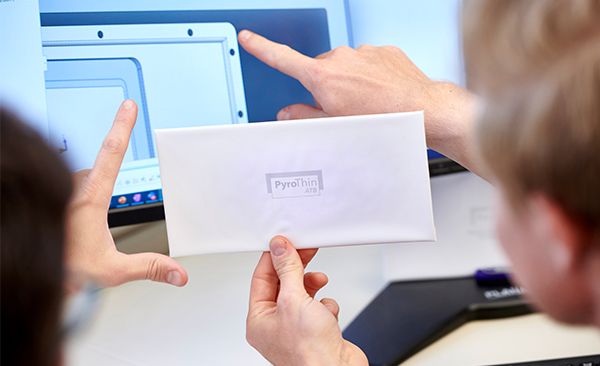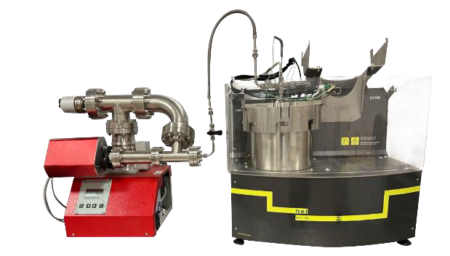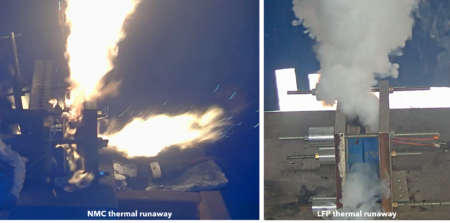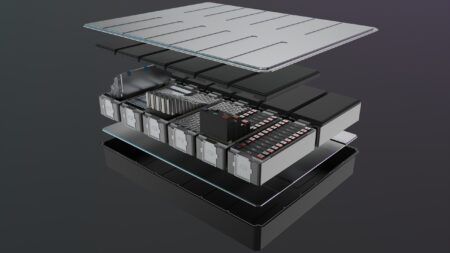EV programs are accelerating at an unprecedented pace as automotive OEMs race to achieve their electrification targets. Next-generation battery platforms are fueled by innovation, but this new technology requires engineers to learn on the job while simultaneously designing their packs. Gaps in understanding a part’s performance can lead to engineering change requests (ECRs) and delay production.
Passenger and commercial vehicle OEMs in Asia, Europe, and North America partner with Aspen Aerogels to solve thermal runaway propagation challenges. Thermal barrier programs often experience ECRs because pack-level thermal propagation behavior becomes apparent late in the design cycle. Cell-to-cell barriers are the easiest part to modify when issues with assembly, cell-face pressure, and cell performance arise. Aspen’s extensive knowledge of aerogel technology and the complexities of thermal runaway has helped OEMs achieve their safety goals and maintain tight deadlines.
PyroThin is an aerogel cell barrier that can act both as a thermal barrier and compression pad in a single material. Understanding the lifetime mechanical performance of a cell barrier is crucial because it impacts the pack’s safety and performance. Li-ion pouch and prismatic cells have preferences about the cell-face pressure they want to be held, which varies by manufacturer. For example, some cells want a tight embrace, while others prefer featherlight contact. Discovering the correct balance is critical because mechanical behavior influences the state of health.
Cell-face pressure evolves as cells breathe during charge and discharge cycles, as well as swell as they age. Over time, cell barriers are also compressed to a fraction of their original thickness as they are squeezed between the moving cells. Predicting that evolution is important to understanding end-of-warranty and end-of-life battery performance. Incorrectly managing mechanical behavior can lead to premature cell degradation, leading to expensive warranty claims or recalls.
Fatigue cycling to test mechanical performance does not provide a full picture. Prescribed displacement enables engineers to control pressure but not strain, while the opposite is true when setting load parameters. Cell-face pressure evolves over time as cells expand and cell barriers fatigue. Engineers must also consider other parts within the pack, such as end plates, cell-to-end barriers, and other elastic elements.
Aspen designed a more realistic test setup to evaluate cell barrier lifecycle fatigue. If engineers cannot obtain completely discharged li-ion cells, a surrogate cell can be made of low-density polyethylene (LDPE). To calculate the cell stiffness, take the cell’s modulus and divide it by the thickness. This will inform the required thickness of LDPE. Other inputs required for this test include geometry, compressive moduli, beginning-of-life pressure, swelling and breathing percentages, and number of cycles.
Before testing, create a compression force deflection (CFD) curve for each sample and calculate the average. In Aspen’s tests, 1.7mm PyroThin was placed onto a steel plate above the LDPE block. PyroThin cell barrier samples underwent 1400 cycles to simulate the end-of-life condition of an NMC cell. A new CFD curve was then measured, which included the effects of fatigue set. The path between cycle 1 and 1400 was shown to behave logarithmically, enabling engineers to predict PyroThin’s evolution as a function of cycle count. Having PyroThin’s expected thickness gives engineers insight into PyroThin’s expected thermal and mechanical performance throughout the pack’s lifetime.
Aspen Aerogels has a dedicated in-house mechanical testing lab that automotive OEMs can utilize as an extension of their testing capabilities. Contact their technical team to learn more about better predicting the lifetime performance of cell barriers.





